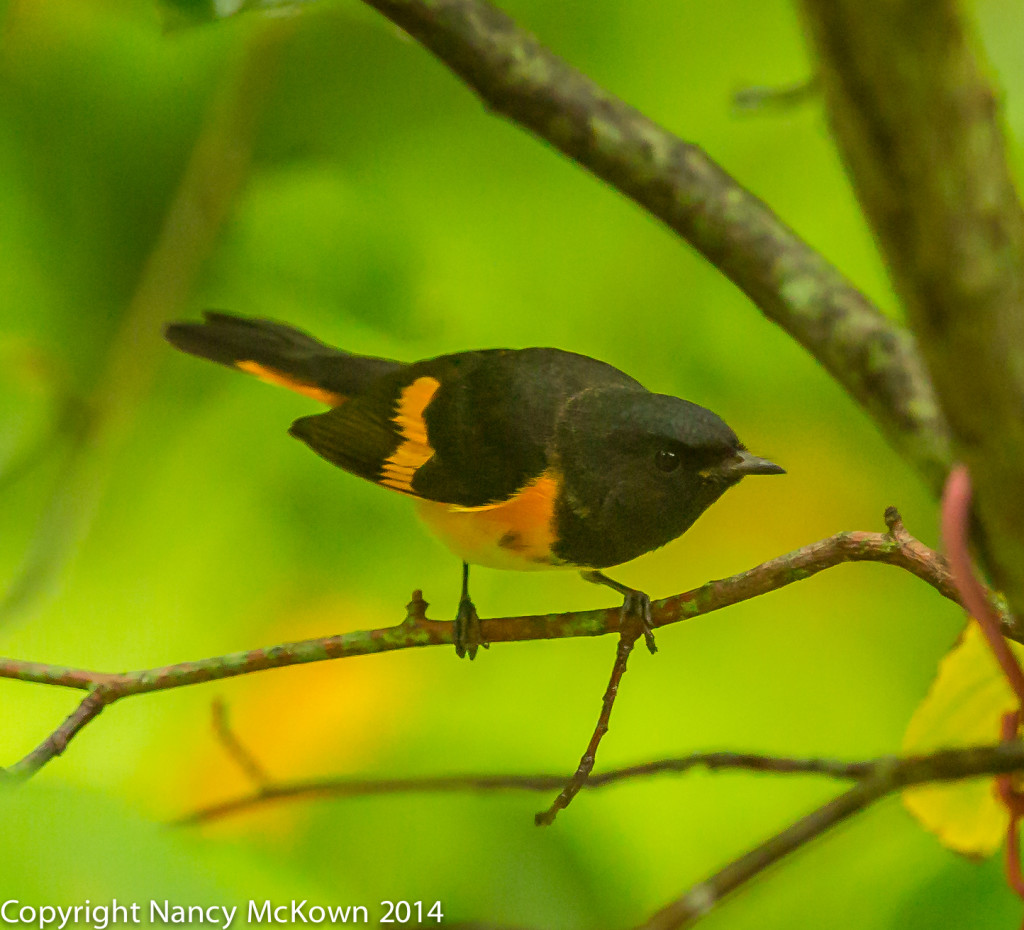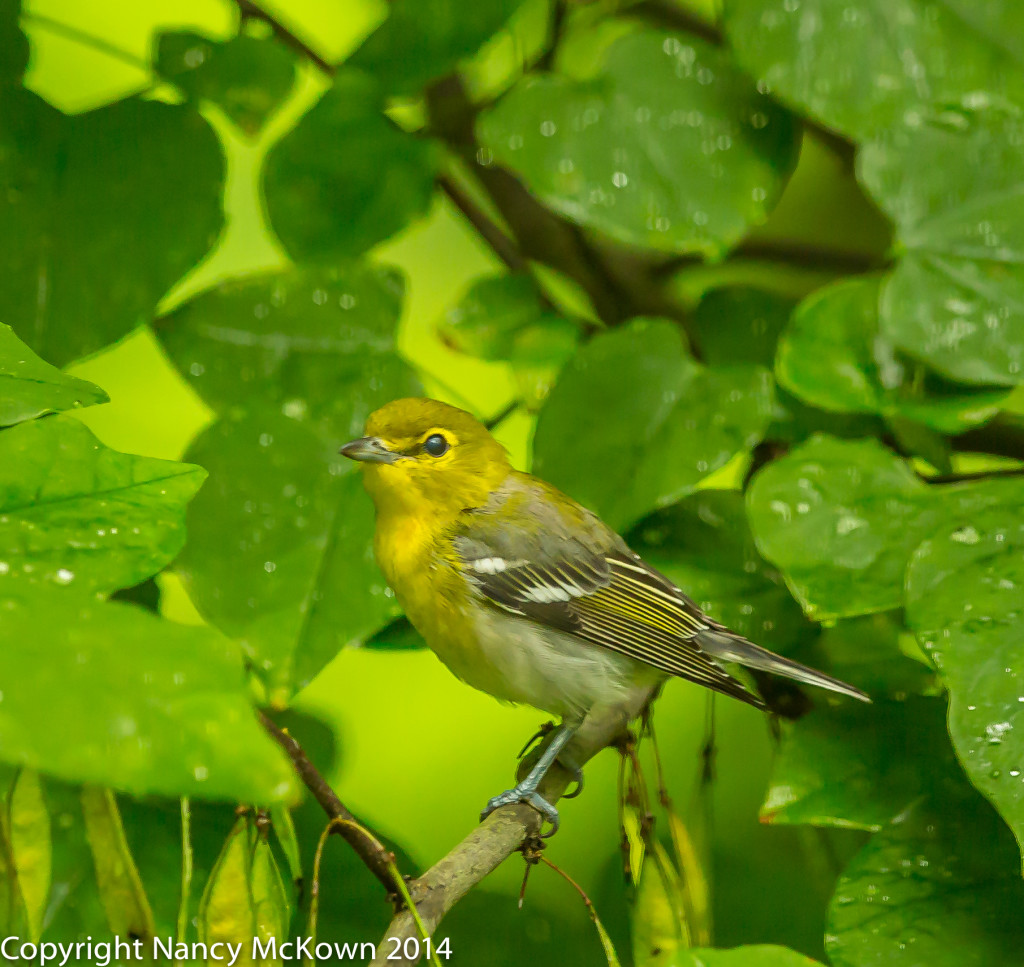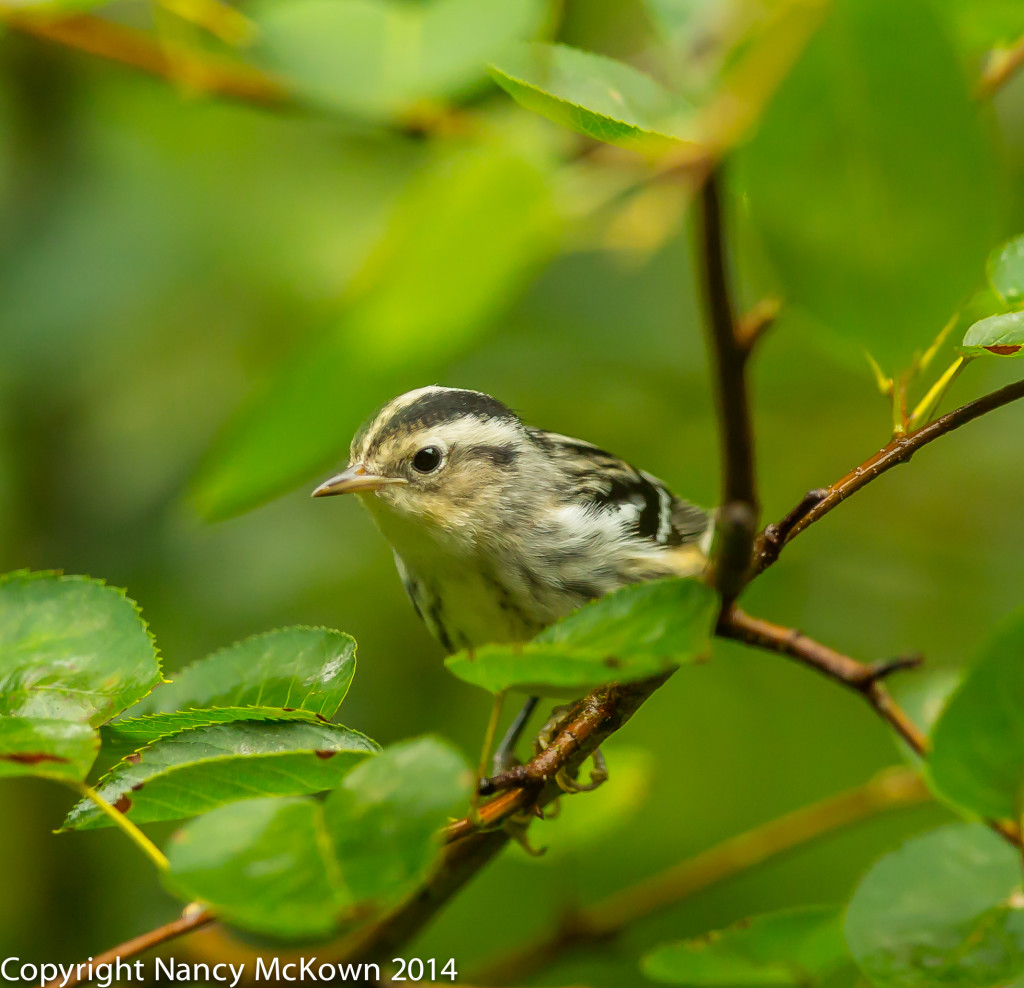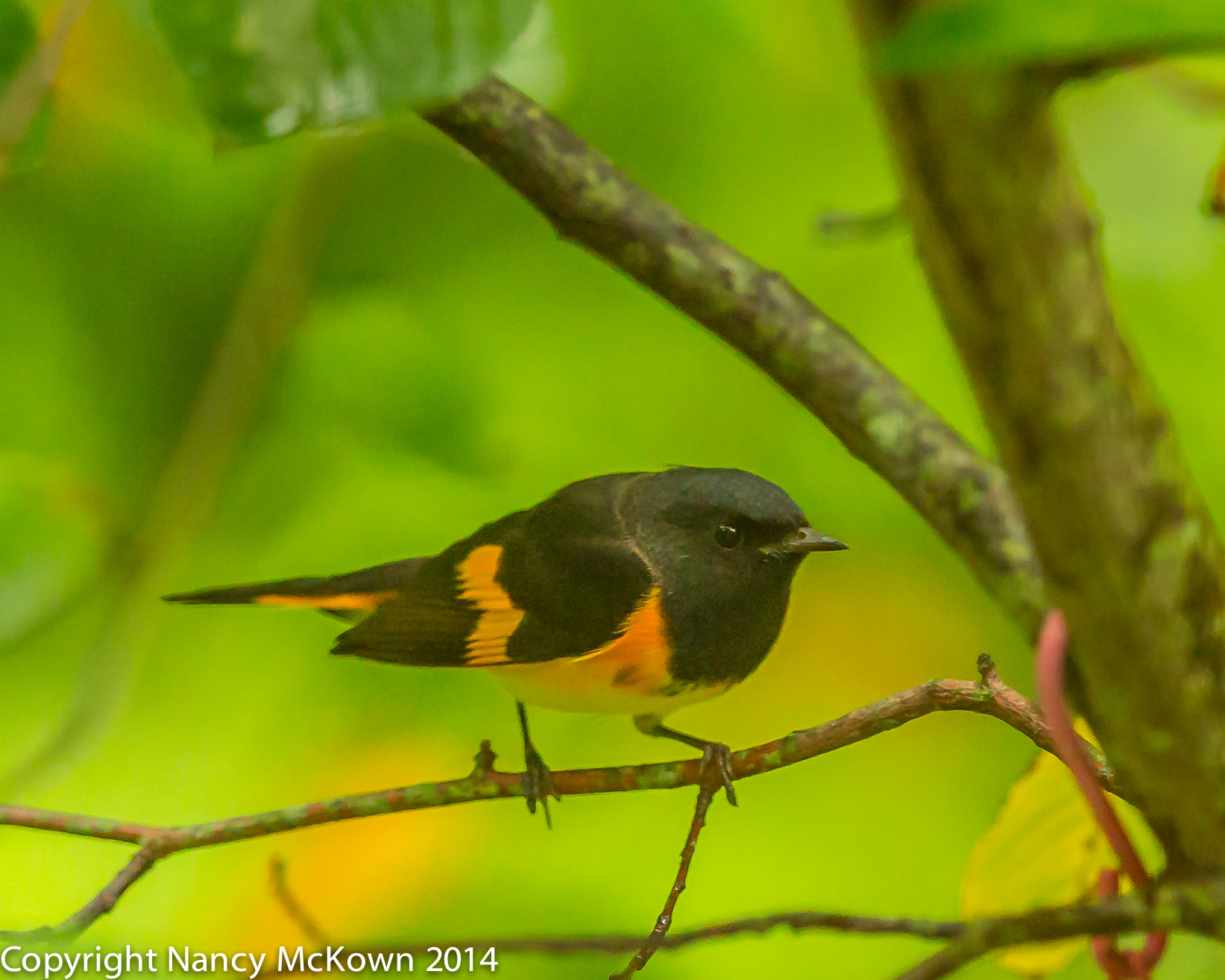Not a Typical Birding Day
It’s mid August, plenty of summer weather ahead of us. As I observe my feeder, the usual visitors are stopping by for seeds…. chicadees, nuthatches, cardinals, titmice, the occasional downy woodpecker. Lovely as they are, I have more photographs of these species than I can count.
My husband and I are very watchful. We like to think that we know which species of birds have taken up residence in our yard. We are always hopeful that we will spot new visitors, but that doesn’t happen often in the summer.
During spring and fall migration periods, a lot of bird encounters are happenstance. On this particular day, within a span of 30 minutes, I encountered and photographed 6 newcomers perching in the trees and bushes around the feeder. It was exciting because we groom our yard to be inviting to a wide variety of bird species, and all that work was paying off.

ISO 2500; f/3.5; 1/800 Second
Grab and Go Photography
We were inside the house when we spotted the first transient- a female blue winged warbler. I grabbed the camera and swapped out the 500mm for the 300mm lens. It was a rainy and dark day, so I had to choose a wide open aperture setting to get even a passable shot. Working quickly, I placed the tripod near the window, positioned my camera and took several shots of the warbler as she tentatively approached the feeder. I did not dare open my less than sparkling window, fearing that the commotion would cause her to fly off and vanish forever. Windows shut, I just followed her with the lens (attached to the gimbal head) as she hopped between feeder and foliage.

Perched within View for only a few seconds.
ISO 4000; f/3.5; 1/800 Second
New Birds Kept Arriving
A new, beautiful warbler! I was practically giddy, but the best was yet to come. Within minutes, I was looking at a brightly colored orange and black warbler…. a male american redstart. He perched only seconds, long enough for me to focus and hold down that shutter button. In his wake, a yellow throated vireo landed on the same branch, staying only long enough to snatch a caterpillar. I lifted my eyes and spotted another newcomer tucked behind the leaves of an adjoining branch. I swiveled the gimbal and tried to position the lens to focus amist all the leaf clutter. The new bird hopped into view – a black and white warbler. I focused and was able to press the shutter only once before he jumped out of view. I scanned again and this time, a warbling vireo and a female american redstart graced my view. So much activity! I pointed my lens at anything that moved.
And then they were gone.

ISO 2500; f/3.5; 1/800 Second

ISO 1250; f/3.5; 1/800 Second

ISO 1600; f/3.5; 1/800 Second

ISO 2500; f/3.5; 1/800 Second
Bird Migration Marathons
While waiting by the window and hoping to see more new birds, I checked Sibley’s Field Guide. No telling exactly where they came from, but all 5 of these species nest in eastern North America, including southwest Michigan. If I had spotted one or two new species over the same amount of weeks, I might have thought that these birds were just being adventurous in a new territory and would return to their territories after their little sojourn. But 5 new species appearing in a span of 30 minutes is a spectacular show in our yard. One of the first waves of small bird migration must be upon us.
Champions of Endurance
How early in the summer does fall migration begin?
Some species (especially shorebirds) begin their migratory journeys as early as July. Many factors impact when birds commence their migratory journeys, how often they need to stop to rest and replenish, and ultimately, how successful they will be along the way. These include: starting location, light, weather, wind direction, temperature, available food along the way, distance to wintering grounds, and maturity of offspring.
Why did 5 different species descend at the same location and at the same time?
While mostly invisible to humans, billions of birds go through their migratory rituals twice a year. With these kinds of numbers, how can birders and bird photographers NOT notice multiple species of transient birds. Migrating birds travel together in waves and the waves pass through at different times. Many smaller and daylight feeding species (like the newly arriving vireos and warblers photographed here) fly at night and rest and replenish during the day.
Still Waiting and Hoping to See More New Birds
I’ve been sitting near my library windows all afternoon, camera at the ready, hoping to spot those same new birds again…. or maybe a wave of new ones that temporaily drop out from their long flight and grace us with their presence. So far only the usual residents are making an appearance. The mere size of fall migration pretty much guarantees that, if I keep a watchful eye, I am sure to see more transients visit our yard.
I am thinking about the best place in the yard to set up my blind so I don’t have to shoot through the window glass. Meanwhile, I’m going to wash my windows.
For more information about small bird migration patterns, press this link.
For more information about gimbal heads, press this link.
See this post for more information about our certified wildlife habitat.
UPDATES:
- mourning warbler
- chestnut-sided warbler
- magnolia warbler
- black throated green warbler
- cape may warbler in fall plumage
- red-eyed vireo
- ovenbird wood warbler
- orange crown warbler
- hooded warbler
- canada warbler
- blackburnian warbler









